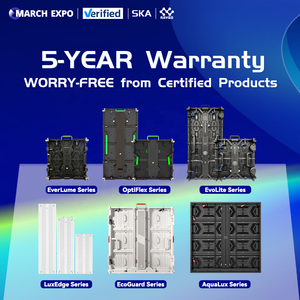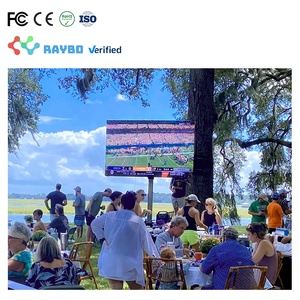
All categories
Featured selections
Trade Assurance
Buyer Central
Help Center
Get the app
Become a supplier

(201 products available)







































NodeMCU is an open-source platform that deals with the Internet of Things. In this case, there are{" "}two main types of NodeMCU OLECs:
Monochrome OLED Displays:
These OLED displays show images, symbols, and text in a single color on a black background. The available colors include white, blue, green, red, purple, orange, yellow, cyan, and amber. The monochrome OLEDs vary from 0.66 inches to 5.0 inches, featuring resolutions styles like 128x64, 128x32, 128x96, 256x64, 256x128, and 1024x768. Every display has a single-color pixel on a black background. The 0.66-inch monochrome OLED display, for example, has a white or blue backlit with a 128x64 pixel resolution. This monochrome display is suitable for basic applications that only need text and graphic visualization in a single color.
Color OLED Displays:
These NodeMCU OLEDs have vibrant colors with higher visibility compared to LCDs or monochrome OLED screens. This is because the light-emitting diodes in these displays emit their own light without requiring additional backlighting. The 0.91-inch type can have a resolution of 64x64 pixels but with a full-color visualization. A model can visualize up to 262,000 colors. So, vivid and colorful images can be displayed. The 1.44-inch and 1.5-inch variations can have either a resolution of 128x128 pixels or 128x128, giving visualizations a sharper quality. With the presence of more colors, it is possible to view clearer diagrams or graphs on the 1.5-inch NodeMCU OLED with Gestner color representation.
Display:
OLEDs stands for organic light-emitting diodes, which displays that are brighter than LCD displays. This is because they do not need a backlight. An OLED can be seen clearly in bright sunlight, making the NodeMCU for OLED useful in varied lighting conditions. The display's low power requirements benefit battery-powered devices, and because the LCD is not as responsive as an OLED, this adds to the appeal of using an OLED with a fast refresh rate.
Sensors:
A NodeMCU with OLED can come with sensors that can measure temperature, humidity, air quality, motion, light, and sound. When the OLED is paired with a microcontroller like the ESP8266 or ESP32, which has Wi-Fi capabilities, the information from the sensors can be sent via Wi-Fi and then displayed in real-time on the OLED. Environmental monitoring, home automation, and IoT applications are a few benefits from the sensors.
Push buttons:
When the OLED is added to the ESP8266 or ESP32, it may come with push buttons. These buttons can allow the user to interact with programs that are running on the microcontroller by selecting the values or scrolling through options that are displayed on the screen. The microcontroller's operation can also be changed with the push buttons. If no touchscreen is available, then the push buttons provide a simple means of user input.
Compatible software:
When choosing a NodeMCU OLED, the software compatibility must be considered. Because the microcontroller is pre-programmed with firmware, this determines how it will be used. The firmware must be compatible with the libraries of the display and any sensors that are being used. If not, then additional libraries cannot be added.
Screen size:
The OLED screens can come in two sizes of 0.91 inches or 0.96 inches. When deciding which OLED to use with the NodeMCU, the display size is an important factor. If there is more information to be displayed, the larger screen is a better choice. A larger screen will also be easier to read. However, the size of the text and images displayed will be smaller with a 0.91 or 0.96 screen. The right choice will depend on the application, portability, and interface requirements.
Applications of NodeMCU OLED:
Informed purchasers see how to deliberately buy things that are benefit situated and offer an incentive to clients. They see how items are made, the provisions expected to build their life span, and the related costs of support. The accompanying rules will assist with guaranteeing that the NodeMCU OLED is acquired deliberately and that its quality and support are sufficiently significant to create benefits.
Q1. What is the difference between NodeMCU and ESP8266?
A1. NodeMCU is a platform for developing IoT applications and can refer to both hardware and software. The NodeMCU hardware is based on the ESP8266 Wi-Fi chip, while the NodeMCU firmware is built on the Lua scripting language and includes an ESP8268 chip. This allows developers to create IoT applications that use Wi-Fi connectivity.
Q2. Is NodeMCU a microcontroller?
A2. NodeMCU is both hardware and software. The NodeMCU software is built on the Lua script, while the NodeMCU hardware contains a Microcontroller (ESP8266) for running programs. As a result, NodeMCU can be used to build IoT applications.
Q3. What is OLED?
A3. OLED stands for Organic Light Emitting Diode. This is a display technology that uses organic compounds that emit light when an electric current is applied. OLED displays provide better contrast and richer colors than traditional LCD screens.
Q4. How does a NodeMCU work with an OLED?
A4. A NodeMCU Oled works by using a programmatic code that tells the microcontroller what information to display on the OLED screen. The display shows information like the temperature, humidity, time, and speed, among other details.